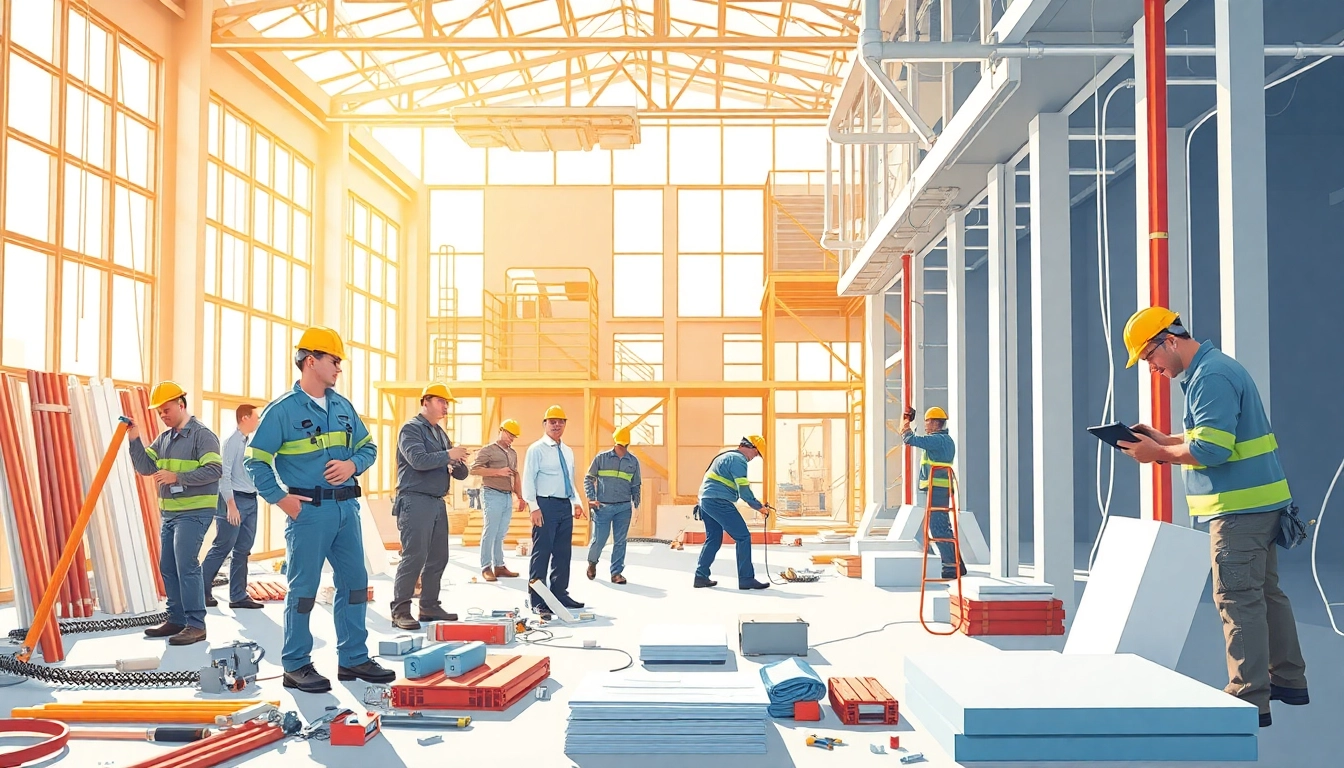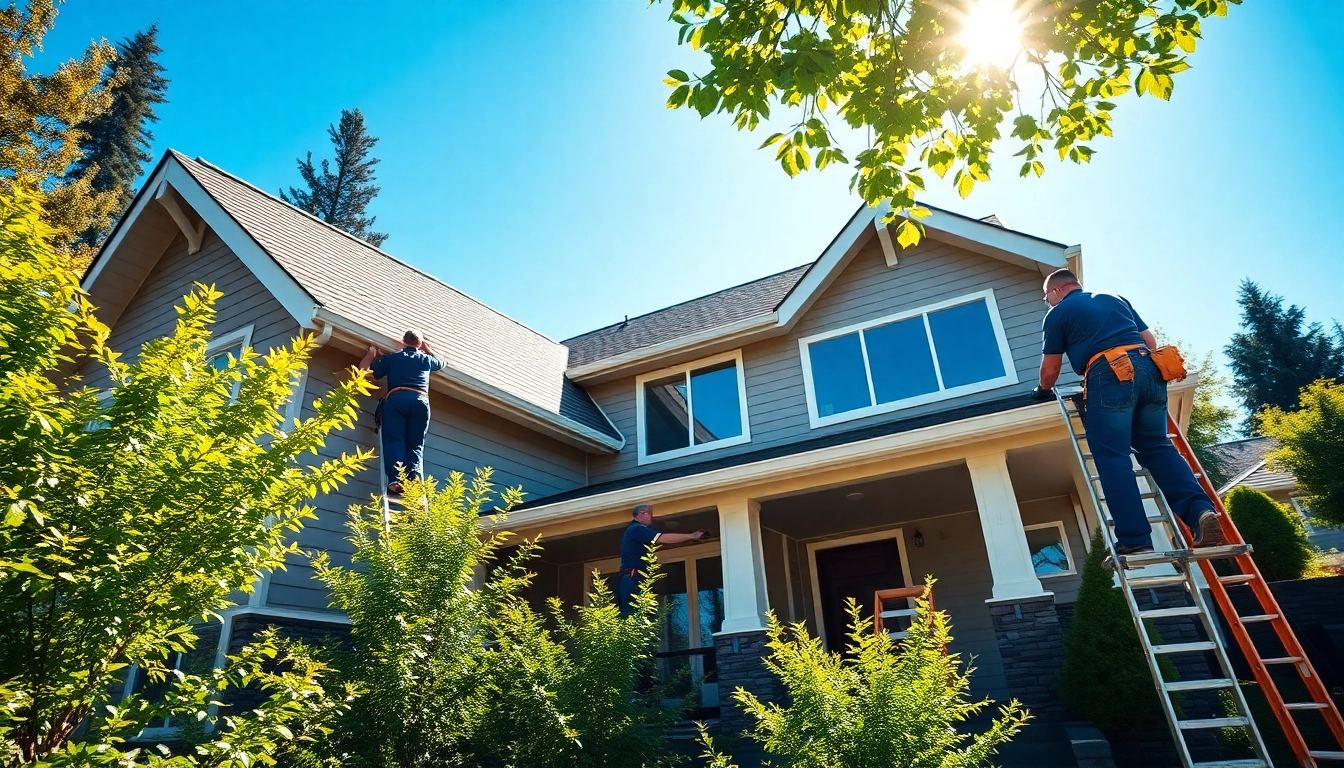Understanding Austin Construction: A Local Industry Overview
The landscape of austin construction is an intricate tapestry woven with history, modern demands, and a diverse array of professionals dedicated to building and remodeling the city. Austin is not just a tech hub; it’s a thriving construction hotbed where innovation meets tradition. Understanding the nuances of this industry is essential for homeowners, investors, and anyone interested in the development of this vibrant city.
Historical Context and Development Trends
The construction industry in Austin has undergone monumental changes over the past few decades. The city’s rapid population growth has driven demand for new homes, commercial spaces, infrastructure, and public facilities. Building permits in Austin have seen year-on-year increases, reflecting the unwavering enthusiasm for development.
Historically, the Austin construction scene was dominated by small to medium-sized contractors focusing on local needs. However, as the city expanded and attracted corporate giants and startups, larger firms began making their mark. This shift has cultivated a more competitive atmosphere, pushing companies to adopt innovative strategies and technologies to remain relevant.
Key Players in the Austin Construction Scene
Several key players are shaping the Austin construction landscape:
- Austin Industries: With over 7,000 employee-owners, they specialize in civil, commercial, and industrial construction.
- The Austin Company: Focusing on design-build construction, they provide a comprehensive range of services, including construction management and facility maintenance.
- Austin Construction Company: Known for their expertise in sitework and paving, they cater to both commercial and residential sectors.
- Austin/Jones Corp: They broadened their scope by working across various markets, emphasizing licensed and registered operations nationwide.
Emerging Technologies Impacting Construction
As technology evolves, so does its impact on construction. Tools such as Building Information Modeling (BIM), drones for site surveys, and advanced project management software are reshaping how companies operate. These technologies enhance efficiency by enabling precise planning, reducing waste, and ensuring that projects stay within budget. Moreover, the rise of sustainable construction practices, with an emphasis on energy efficiency and green building materials, aligns with Austin’s values, further pushing innovation within the sector.
Top Austin Construction Companies to Consider
Industry Leaders and Their Specializations
When considering contractors for your construction needs, it’s crucial to understand the specialties of different firms:
- Austin Industries: This notable firm handles various sectors, including civil, industrial, and commercial construction.
- TRC Companies: Known for their cutting-edge technology in project delivery, they excel in utility construction.
- Paladin Construction Group: They are notable for residential development and high-end remodeling projects
Comparing Services and Pricing
Pricing in the Austin construction industry can vary widely based on project scope, material choices, and contractor reputation. It’s crucial to gather multiple quotes and compare not just the overall cost, but the breakdown of services provided. Many companies offer design, planning, and consultation as part of their packages, which can add significant value to a project but also increase upfront costs.
Client Testimonials and Case Studies
Real-life experiences from previous clients can provide invaluable insights into what to expect from contractors. Companies like Austin Industries often share detailed case studies and testimonials on their websites, showcasing their successful projects. Prospective clients should look for reviews related to timelines, communication, and quality of workmanship to make a more informed decision.
Best Practices for Hiring Austin Construction Professionals
Essential Qualifications to Look For
Hiring a construction professional in Austin requires careful consideration. Key qualifications include:
- Licensing and Insurance: Ensure that all potential contractors are licensed and carry adequate insurance to protect against liabilities.
- Experience: Look for contractors with substantial experience, especially in specific types of projects that fit your needs.
- Portfolio: A well-rounded portfolio displaying completed projects can give insights into the contractor’s capabilities and style.
Questions to Ask Potential Contractors
Asking the right questions can significantly impact your decision. Here are some critical questions to consider:
- What is your estimated project timeline, and how do you manage delays?
- Can you provide references or testimonials from past clients?
- How do you handle project cost overruns?
- What is included in your contract in terms of warranties and post-construction support?
Understanding Contractual Agreements in Austin
Contractual agreements are essential in construction projects to ensure that both parties understand the scope, expectations, and conditions of the work. It’s advisable to have legal counsel review any contracts before signing them, to ensure all terms are clear and fair.
Contracts should clearly outline payment structures, including deposit requirements, milestone payments, and what happens in the event of project delays or disputes. Transparency here can save costs and headaches down the road.
Innovative Design and Build Approaches in Austin Construction
Trend Analysis: Sustainability and Green Building
The push for sustainable practices is one of the most significant trends in the Austin construction sector. Builders are adopting green technologies, such as solar panels, energy-efficient windows, and sustainable materials, which not only benefit the environment but also reduce long-term operating costs for homeowners and businesses.
Local ordinances increasingly prioritize sustainable practices, demanding that new buildings adhere to specific energy usage benchmarks and environmental impact regulations.
Customization in Residential Projects
Customization is becoming increasingly popular among homeowners in Austin. This trend enables clients to specify their unique needs and preferences, resulting in tailor-made living spaces. Contractors are leveraging advanced 3D modeling to help clients visualize their projects, making the design process more collaborative and engaging.
From open floor plans to smart home integrations, customization options reflect the individuality of Austin residents, further enriching the local building landscape.
Commercial Spaces: Balancing Function and Design
As businesses expand in Austin, so does the requirement for commercial spaces that combine function with aesthetic appeal. Modern commercial projects focus not only on utility but also on creating environments that reflect company values and attract talent.
This balance can involve incorporating natural lighting, open spaces, and communal areas that enhance employee satisfaction and productivity. The design approach is increasingly holistic, considering how space impacts worker behavior and business outcomes.
Future Trends Shaping Austin Construction
Impact of Urban Development Policies
Urban development policies are critical in shaping the future of construction in Austin. The city has various master plans aimed at addressing housing shortages, infrastructure needs, and sustainable development. Understanding these policies helps contractors and developers align their projects with local regulations and community needs.
Policies aiming to stem gentrification while promoting affordable housing indicate a shift towards inclusive urban development, which impacts project viability and design approaches.
The Role of Community Feedback
Community feedback has become a cornerstone of construction projects in Austin. As stakeholders prioritize public involvement, it’s essential for contractors to engage with local residents and seek input on new developments.
This engagement can take many forms, such as town hall meetings, surveys, and online feedback platforms, and helps ensure that projects meet community needs and minimize opposition.
Forecasting Demand for Construction Services
As the Austin metropolitan area continues to attract new residents and businesses, demand for construction services is anticipated to remain robust. Analysts project steady growth in both residential and commercial sectors, driven by ongoing urban expansion and revitalization projects.
Understanding these demand patterns can help construction companies strategize effectively, aligning their services to meet future market needs while also preparing for potential economic shifts that could affect the industry.















Leave a Reply